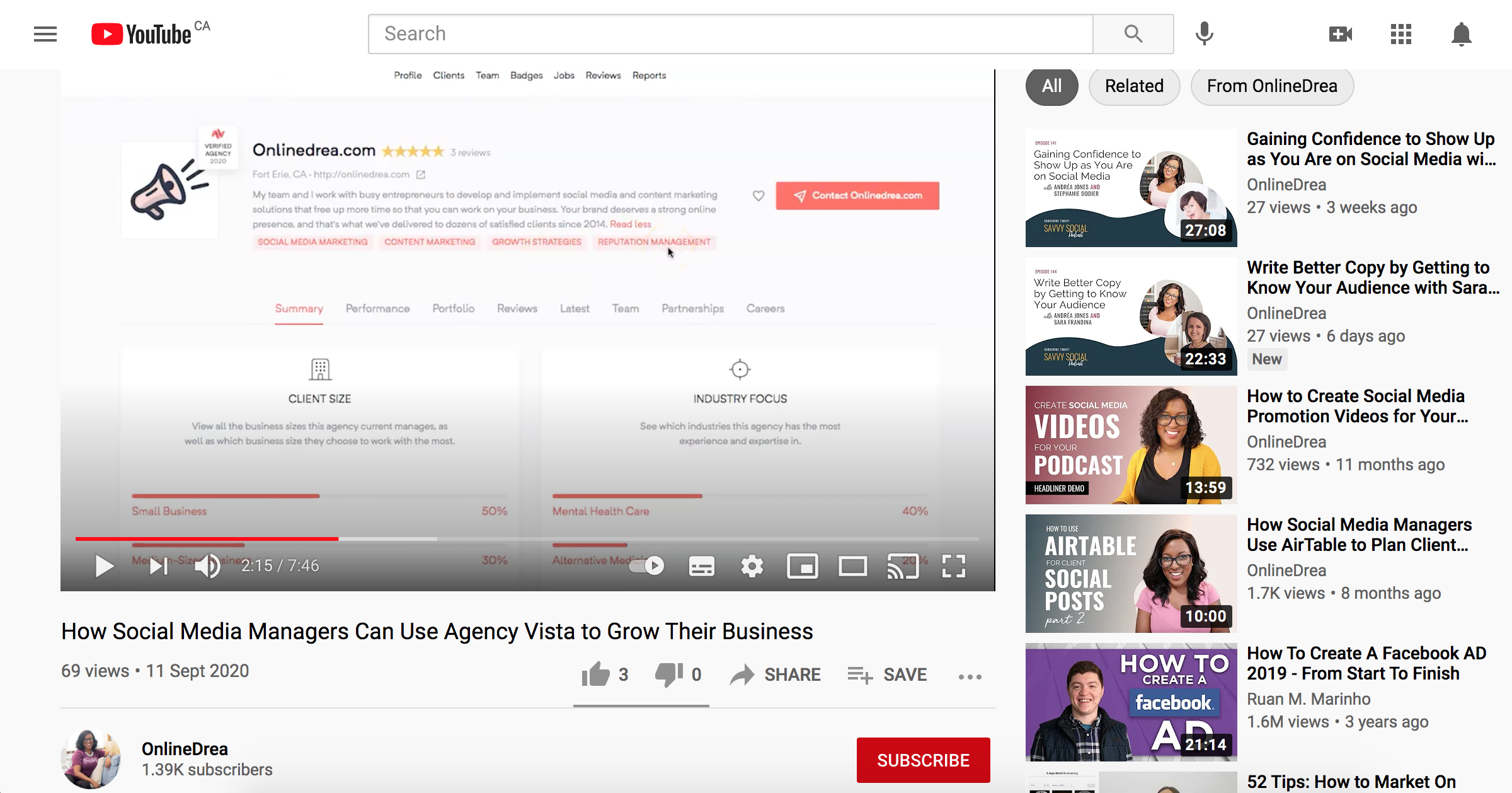Content marketing is one of the most cost-effective marketing techniques (apart from email marketing) that is why brands are putting more emphasis on the quality of content that they publish. The only challenge? Is figuring out the content types that can deliver real results for your business.
Before deciding on the type of content to use, below are some useful tips to keep your content fresh and relatable:
- Know who your target audience is. This should be your top consideration when choosing a subject for all your posts. Some things you can do to determine this are: Conducting market research, understanding purchase path and pain points, and knowing your existing customers.
- Have a calendar template. Always plan all of your posts ahead of time. Having a calendar can help you determine your desired posting schedule. Also by having a content calendar, you save time by being organized, posting consistently, less typos and grammatical mistakes, and you won’t miss on seasonal events.
- Include a social media infographic. This is a very powerful form of content that you can use to boost engagement and traffic. It provides your customers something visual and interesting. It will not only engage them, it also makes them more likely to share your posts with their networks. This will significantly boost your reach and social media presence.
- Have a strategy checklist. This is a structure that gives you direction on how to strategize, set priorities, execute your plan, and measure your marketing campaigns. Make sure to build out a comprehensive strategy for your social media content.
- Know what content works best for each social network. In social media, your content is not a one size fits all. While it’s okay to occasionally post the same content across your social media profiles, it is important to understand that each network serves a specific purpose. They have different user expectations and audience behavior. Your post on Facebook may not necessarily be applicable for Instagram and vice versa.
And now, let us have a look at the most engaging content types you can write today.
Engaging Content Types to Use Today
1. Informative Content
Introduce your brand, brag about it! Let your audience know how it can help them with their daily business needs. If your brand has a blog, use it. This will help generate traffic to your blog. One of the best ways to get your blog or site seen is to share it on your own social media platforms.
The main purpose of this type of content is to showcase the products and services your brand offers. The content should provide information that will teach the audience what these products and services do and why they’re beneficial.
How to make a quick informative content:
- Keep your language simple. Speak to your target audience in plain English, using words we would all use day-to-day, if you want to be understood better.
- Break the message down. Use shorter paragraphs (to keep the target audience’s attention throughout), bullet points, lists, and tables to lay out harder-to-digest statistics and information.
- Use facts and figures people can better understand.
- Remember to put yourself in the target audience’s shoes. Make sure to think about who is going to read your content and ask yourself exactly what they will be concerned about, or what they need to know and what you want them to know.
- Post when your audience is online. Check out the best times to post on social media in 2021.
2. How-To’s
This is an educational content where interested audiences can view a step-by-step guide on how to do something. A good how-to article contains a list of steps expounding on each phase of the process until completion.
When you need to learn something, the first thing that almost everyone does nowadays is to Google a how-to. How to cook lasagna, how to start a Youtube channel, etc. For content providers, these how-to search queries provide the most important marketing opportunities. Because of the problem-solution nature of how-to content, it provides a wide range of conversion opportunities where you can offer your products or services as a solution without ruining or interrupting your site users’ reading or browsing.
3. Video Reviews
Video testimonials from happy customers are some of the best marketing resources you have. Making sure you capture their experiences as it creates a powerful tool that’s practically effortless to use.
Videos can easily grab attention, are engaging and easily shareable in the current online world that is why video marketing is one of the most efficient marketing formats today.

Why is it effective? Video reviews convert, it creates a deeper and more emotional appeal for your brand and it provides the opportunity for regular customers to be brand advocates. Who better to sell to your future customers than your current satisfied ones, right?
4. Seasonal Content
There are two types of seasonal content: season and month-by-month. The good thing with seasonal content is that you will never run out of topics to cover. Christmas alone will give you hundreds of topics to talk about! The challenge here is making these interesting topics apply to your industry.
Seasonal content requires months of planning (this is where your content visual calendar plays a big role!) – you can start with the national holidays, followed by the smaller holidays, then add some industry-specific occasions as well. Pretty soon you will have a filled up calendar that is good for the entire year!
5. Co-Marketing Content
Collaborating with other brands or individuals is always a great idea as it increases your reach to a group of users who may not yet be aware of your brand.
Co-Marketing content recommendations:
- Audience targeting. Make sure that the audience of the other person/brand matches with your target market
- Engaging topic. The topic should be interesting and can start a discussion within the community. Having a commercialized content might discourage readers to share it with their peers.
- Brand relevance. Of course, the content needs to serve the emotions you want people to have by reading it. Just be careful not to do hard selling as people can immediately smell that from a mile away!
6. Listicles
The most common and arguably the most overused content type, with good reason! People love to read lists rather than long paragraphs mainly because lists are easier to digest. Listicles work because they break the information into small, manageable chunks and then elaborates on each one.
So what makes a good listicle? Of course, topic should be fresh and interesting, something that your target audience would be interested in learning more. Notice how this article is actually a listicle itself? Instead of naming it “8 Different Types of Content,” I made the article click-worthy by making sure that it is focused not just on the different types of content, but on the different types of engaging content. Big difference.
Listicle examples to inspire you:
- Agency Vista’s “Best 21 Online Marketing Tools for Small Businesses“
- Agency Vista’s “Top 20 Digital Marketing Agencies of 2021“
- HubSpot’s “6 Secrets to Achieving Work-Life Balance, According to HubSpot Marketing Managers“
- AdWeek’s “The 25 Best Ads of 2019“
7. Product Comparisons
Since customers are now spending more and more time researching their choices for products they are looking for online, consumer buying journeys have become more complicated than ever.
When you create a product comparison content, it will help you and your brand become a part of those increasingly complex buying journeys.
A product comparison content may be for a physical product, a software or an application, or even services rendered.
So how does it work? Try searching your brand’s name in Google followed by the word “vs.” Google will then automatically suggest competitors that often appear next to your brand’s name. From there, you can now create content to target those search queries. Make sure to provide accurate information for all comparable products or services and not sound too biased!
A great strategy for this type of content is the use of a comparison table. Instead of forcing readers to remember the information, take notes, flip between tabs, or open multiple browser windows, a side by side comparison will make their decision a lot easier.
8. Case Studies
Case studies are mainly stories about how your real customers have benefited or found solutions to their issues by simply using your brand’s services or the products you offer. Like typical stories, this content must have a leading character (your customer) who achieved their goals or overcame their problems by using your product or service.
Tips for writing an effective case study:
- No matter how well-written a case study is, do not expect it to go viral. Write as realistic as possible towards the goal of the content.
- Find a compelling angle for your story. The better the story, the more engaging your case study will be. And better chances of reaching your target audience.
- Make sure your case study is relatable to your audience. While you want your case study to be interesting and feature a really compelling angle, you still need to make sure that the majority of your target market will be able to identify with it.
- Use facts and data to illustrate key points in your case study. Unlike other types of content, this is a must when writing a case study. Do not forget to cite your sources!
- Be the Robin to your customer’s Batman. While you are making your customers the protagonist of your story, you must frame your business as a supporting character who is essential to achieving their goals and resolving their issues.
- Use your customer’s stories when writing a case study. A great way to tell your customers own story in their own words, so use direct quotes. This provides further validation and credibility by including the customer’s perspective.
- Most people think that case studies are not the most exciting content to read so better make it short and precise. Know the purpose of your case study, focus on it and relay the story with facts and data.
Final Thoughts
Having a great variety of content in your marketing strategy is a great way for your audience to stay interested and be excited about your posts. Don’t be afraid to diversify and explore – different groups of customers require different writing styles so it is important to have some variety to reach new target markets and keep your previous customers coming back for more.

